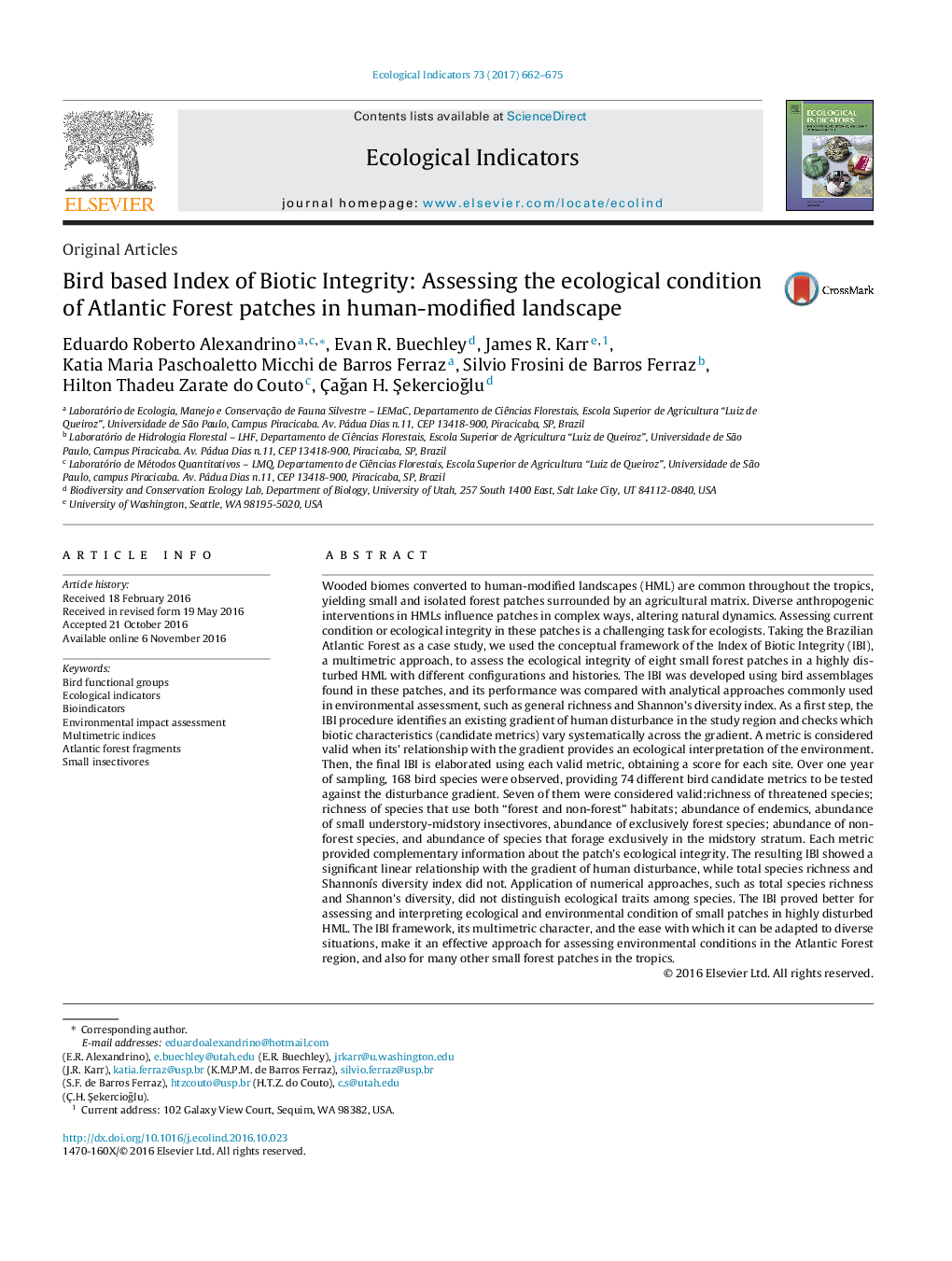| کد مقاله | کد نشریه | سال انتشار | مقاله انگلیسی | نسخه تمام متن |
|---|---|---|---|---|
| 6292669 | 1617129 | 2017 | 14 صفحه PDF | دانلود رایگان |
- Used bird-based Index of Biotic Integrity (B-IBI) to assess small forest patches.
- B-IBI has identified seven avian ecological traits useful in assessment.
- B-IBI identified patch integrity while species richness and Shannon diversity did not.
- Conceptual imparity between test methods accounts for assessments differences.
- B-IBI is a promising method for tropical forest patch assessment in HMLs.
Wooded biomes converted to human-modified landscapes (HML) are common throughout the tropics, yielding small and isolated forest patches surrounded by an agricultural matrix. Diverse anthropogenic interventions in HMLs influence patches in complex ways, altering natural dynamics. Assessing current condition or ecological integrity in these patches is a challenging task for ecologists. Taking the Brazilian Atlantic Forest as a case study, we used the conceptual framework of the Index of Biotic Integrity (IBI), a multimetric approach, to assess the ecological integrity of eight small forest patches in a highly disturbed HML with different configurations and histories. The IBI was developed using bird assemblages found in these patches, and its performance was compared with analytical approaches commonly used in environmental assessment, such as general richness and Shannon's diversity index. As a first step, the IBI procedure identifies an existing gradient of human disturbance in the study region and checks which biotic characteristics (candidate metrics) vary systematically across the gradient. A metric is considered valid when its' relationship with the gradient provides an ecological interpretation of the environment. Then, the final IBI is elaborated using each valid metric, obtaining a score for each site. Over one year of sampling, 168 bird species were observed, providing 74 different bird candidate metrics to be tested against the disturbance gradient. Seven of them were considered valid:richness of threatened species; richness of species that use both “forest and non-forest” habitats; abundance of endemics, abundance of small understory-midstory insectivores, abundance of exclusively forest species; abundance of non-forest species, and abundance of species that forage exclusively in the midstory stratum. Each metric provided complementary information about the patch's ecological integrity. The resulting IBI showed a significant linear relationship with the gradient of human disturbance, while total species richness and ShannoÅs diversity index did not. Application of numerical approaches, such as total species richness and Shannon's diversity, did not distinguish ecological traits among species. The IBI proved better for assessing and interpreting ecological and environmental condition of small patches in highly disturbed HML. The IBI framework, its multimetric character, and the ease with which it can be adapted to diverse situations, make it an effective approach for assessing environmental conditions in the Atlantic Forest region, and also for many other small forest patches in the tropics.
Journal: Ecological Indicators - Volume 73, February 2017, Pages 662-675
